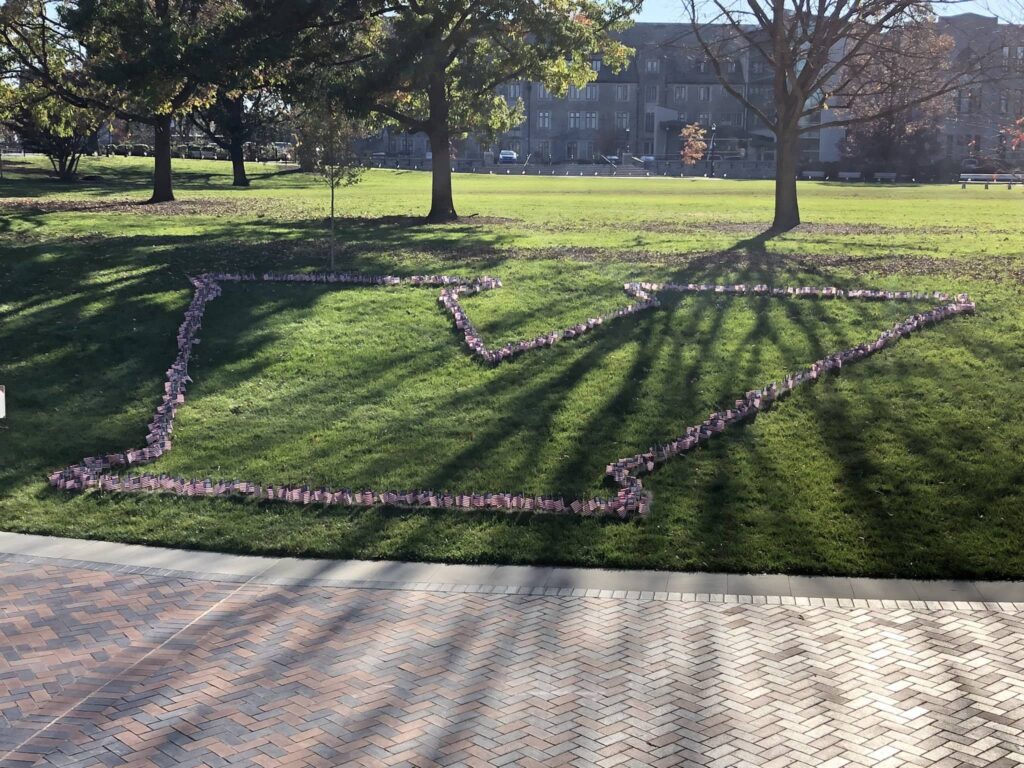
History Shows the Longstanding Connection Between Villanova and the U.S. Armed Forces
History Shows the Longstanding Connection Between Villanova and the U.S. Armed Forces

Last Updated January 14, 2021
The Order of St. Augustine founded Villanova University in 1842, creating what would become one of the premier Catholic universities in the country. Along the way, the school also has established a strong relationship with the men and women who have served their country.
Dating back to the U.S. Civil War, Villanova has forged a connection with the military in a variety of ways, including serving as a military hospital, becoming home to officer training programs and establishing a well-known Navy ROTC program.
The following looks at a few of those connections that have played a big role in the university’s development.
Saved By The Navy
One of the biggest connections between the military and Villanova centers on the fact that the U.S. Navy essentially saved the school in the 1940s.
During World War II, many young men were called into the service, putting the university in a tough financial situation, according to the student-run Villanova newspaper, The Villanovan. However, the Navy chose Villanova to host the V-12 officer’s program, a decision that saved the school.
The Navy created the V-12 program to quickly add to the number of commissioned Navy officers during the war. The program, which ran from 1943 to 1946, eventually saw 125,000 students go through the program at various universities.
Students in the Navy V-12 program at Villanova began classes on July 5, 1943, according to a 1943 article in the Villanovan.
(Interestingly, this news shared space with the announcement that George Hoberg would become the first sophomore to edit the student newspaper. He eventually joined the V-12 program himself, graduated in 1945, served as an engineer on a Navy attack ship, then worked on the Project Whirlwind computer team and has his name on 11 U.S. patents).
The Navy students stayed at Fedigan, Mendel (now Tolentine Hall) and Alumni halls. Villanova’s president in 1943, Edward V. Stanford, welcomed students with a speech that focused on the education opportunities offered by the university. However, he also used humor to remind them of other opportunities.
“Fr. Stanford told the trainees of the religious opportunities available to them at Villanova,” the newspaper reported. “He stressed the fact that because it was so easy to attend the services some students were inclined to forget them.”
Stanford had worked hard to get the V-12 program at Villanova and quickly shifted the school to a different schedule, according to Villanova magazine. The school now held three full terms each year, with commencements held after each term. This allowed students in the V-12 program to graduate in three years if they took classes at an accelerated pace.
The Navy ROTC Program at Villanova
This connection between Villanova and the U.S. Navy has remained strong in the years since. To this day, the Navy ROTC program at Villanova is among the most respected in the country.
The program, which began in 1946 after the V-12 program ended, has produced 22 Admirals and Generals in the United States Navy and Marine Corps. The success of the program is due to a commitment to evolve, according to the school webpage on the topic.
“Continually changing over the decades to fit the needs of the Navy and the society that was indirectly funding it, the NROTC unit has each time met that challenge and evolved to maintain this same top-mark level, the page states.
Haunted Villanova
The connection with the military also has its lighter side. In the case of Villanova, it has produced some excellent scary tales for the Halloween season.
As with any university that has older buildings on campus, Villanova has its share of spooky stories. Many of them are founded in the fact that the university served as a hospital for Union soldiers during the Civil War. It also was used as a hospital for influenza victims during World War I.
This has led to persistent rumors through the years that halls on campus remain haunted, especially Alumni Hall. The east wing of Alumni, built in 1848, is the oldest building on the Villanova campus. It served as the college center during the early days of the university.
The National Paranormal Society even has a page dedicated to the university. On Alumni Hall, they write that students have reported “ghosts of former patients” who wander the halls causing “abnormal creaks in the floors and walls when no one is nearby.”
The Villanova/Military Connection Continues Today
Today, in addition to the Navy ROTC program, Villanova offers degree and certificate programs that offer benefits to military servicemembers and veterans. Some are offered 100% online, giving military students the flexibility and convenience to advance their education.
Villanova also offers savings for military students and support in maximizing their military tuition assistance. Villanova is a military-friendly school that has signed the needed Memorandum of Understanding with the Department of Defense, allowing military students to fully use their tuition assistance at the school, based on their individual eligibility.
Former U.S. Air Force Flight Instructor Thomas Higginbotham graduated from the school’s online Master of Public Administration program in 2017. In an interview, Higginbotham said he originally thought that earning an online master’s degree would be like earning a degree “through YouTube videos,” but soon had his mind changed.
“The personal connections, mentorship and depth of learning beyond the classroom were the unexpected benefits from Villanova’s MPA program,” Higginbotham said.
The connection between Villanova and the military has been strong throughout the years, and remains so to this day. The school provides many benefits and options for military servicemembers and veterans who aspire to earn a college education.




